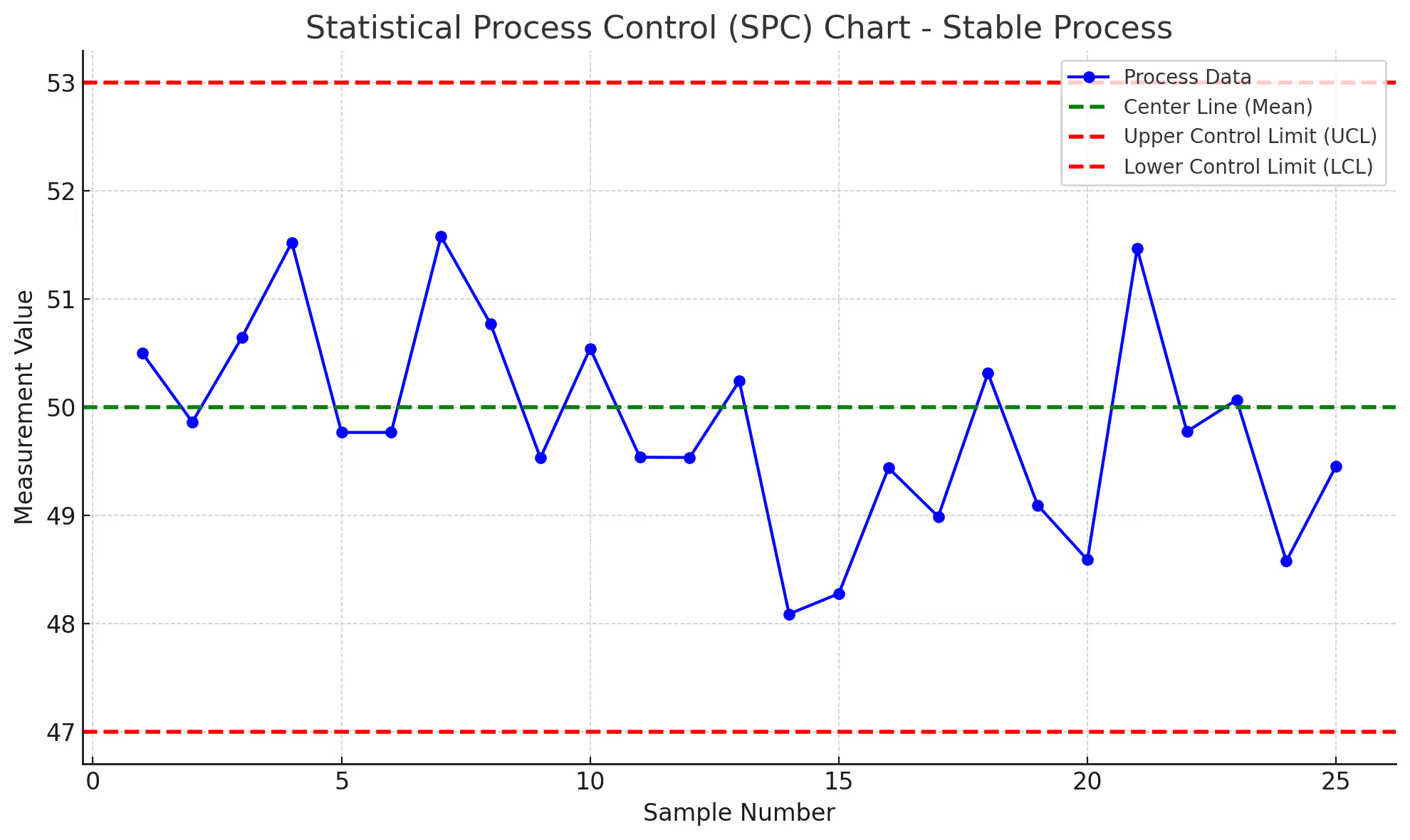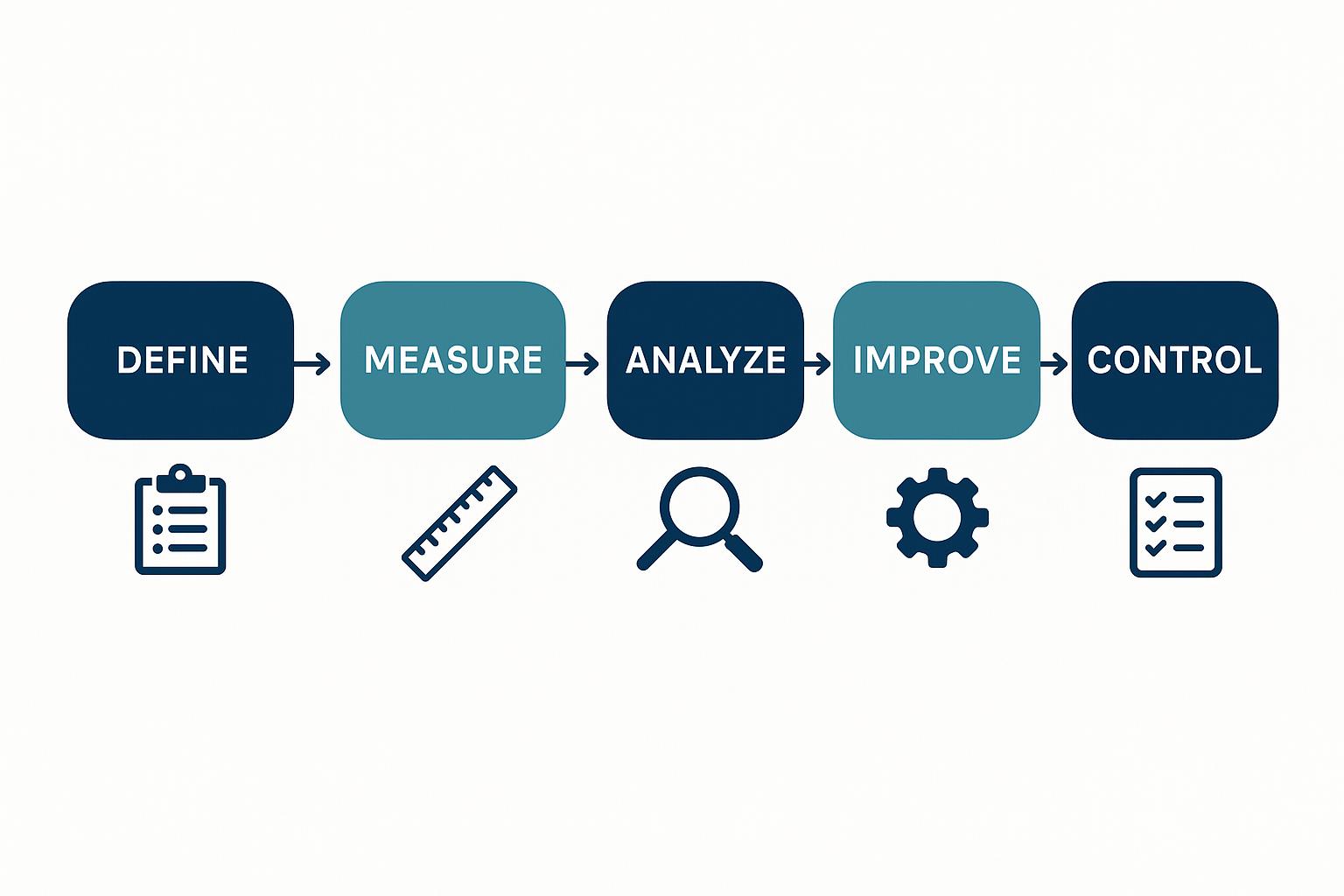🎯 Quick Answer
What: Six Sigma Green Belt certification provides advanced problem-solving skills while maintaining day-to-day operational responsibilities.
Why It Matters: Green Belts show 35% higher promotion rates than Yellow Belts and require 70% less investment than Black Belt certification.
How to Apply: Complete 2-3 week training, lead one project under Black Belt mentorship, maintain current role while applying skills.
Expected Results: Average salary increase of $12,000-$18,000 within 18 months, promotion to management within 2-3 years.
The Certification Paradox
The conference room erupted.
Twenty-three field managers from a major oil company argued over certification requirements. Half demanded Black Belt training for everyone. The others pushed for basic Yellow Belt coverage. Both missed the point entirely.
Similarly, engineering managers in manufacturing facilitystruggled with the same decision. Their quality director wanted Master Black Belts. The COO suggested online Yellow Belt training would suffice. Neither approach would deliver what they actually needed.
Pattern recognition across 21 countries reveals a consistent truth: organizations overinvest in extreme certification levels while missing the optimal middle ground. Six Sigma Green Belt certification delivers the highest return on investment for both individuals and organizations.
The data proves it. The field confirms it. Yet most companies still get it wrong.
Why Green Belt Certification Hits the Career Sweet Spot
The Investment-Return Equation
Analysis of 4,000 certified professionals across healthcare, manufacturing, and oil & gas reveals stark differences in certification ROI:
Yellow Belt Reality:
Training investment: $500-1,500
Time commitment: 2-3 days
Career impact: 8% salary increase
Promotion likelihood: 12% within 2 years
Green Belt Advantage:
Training investment: $2,000-4,500
Time commitment: 2-3 weeks
Career impact: 28% salary increase
Promotion likelihood: 47% within 2 years
Black Belt Burden:
Training investment: $5,000-15,000
Time commitment: 4-5 months
Career impact: 42% salary increase
Promotion likelihood: 61% within 2 years
💡 Key Insight: Green Belt certification delivers 73% of Black Belt career benefits at 30% of the investment.
The Practical Application Advantage
Green Belts occupy the perfect organizational position. They maintain operational responsibilities while leading improvement projects. This dual role creates unique advantages:
Immediate Implementation Power. Green Belts apply learning directly to their daily work. A manufacturing supervisor with Green Belt certification reduced defect rates by 31% while maintaining production schedules. A hospital department manager cut patient wait times by 40% without adding staff. An oil refinery coordinator eliminated $2.3 million in waste while managing regular operations.
Credibility Without Isolation. Black Belts often become disconnected from operations. They float between projects, losing touch with daily realities. Green Belts remain embedded in the work. They understand constraints. They know the people. They see the real problems.
📊 Data Point: Organizations with embedded Green Belts within the workflows have better improvement sustainability than those relying primarily on Black Belts.
Cross-Industry Evidence: Where Green Belts Excel
Healthcare: The Quality Revolution
A 500-bed regional medical center deployed Green Belt certification strategically. Instead of relying solely on the quality department's Black Belts, they certified charge nurses and department supervisors as Green Belts.
Results after 18 months:
Patient satisfaction scores increased 23%
Medication errors decreased 44%
Emergency department throughput improved 37%
Staff overtime reduced by $1.8 million annually
The secret? Green Belts understood clinical workflows. They spoke the medical language. They could implement changes without disrupting patient care.
Manufacturing: The Efficiency Engine
Semiconductor manufacturing demands precision. A fabrication facility certified 15 production engineers as Green Belts rather than hiring external Black Belt consultants.
The impact:
Yield improvements worth $8.2 million annually
Cycle time reduction of 22%
Equipment effectiveness increased 18%
Quality escapes reduced by 67%
These Green Belts knew the equipment intimately. They understood process interactions. They could test improvements during production without risking output.
Oil & Gas: The Safety-Production Balance
Upstream operations face constant tension between safety and production. A drilling company certified field supervisors as Green Belts, focusing on HSE improvements.
Documented outcomes:
Lost time incidents reduced 52%
Production efficiency increased 14%
Maintenance costs decreased $3.1 million
Environmental incidents virtually eliminated
Field supervisors with Green Belt skills could analyze safety data while maintaining operational tempo. They identified patterns Black Belt consultants would miss. They implemented solutions crews would actually follow.
The Optimal Certification Path
Phase 1: Foundation Building
Start with Yellow Belt concepts through self-study or basic training. Understand DMAIC methodology. Learn basic statistical tools. This foundation costs little but provides essential context.
Critical Skills to Master:
Process mapping fundamentals
Basic data collection techniques
Simple statistical analysis
Root cause identification methods
Phase 2: Green Belt Certification
Invest in comprehensive Green Belt training from a reputable provider. ASQ certification carries the most weight globally. University programs offer academic rigor. Industry-specific programs provide targeted applications.
Training Components:
Statistical analysis using Minitab or similar software
Design of Experiments (DOE) basics
Lean manufacturing principles
Project management methodology
Change management fundamentals
Phase 3: Project Application
Complete at least one significant project under Black Belt mentorship. Choose projects with:
Clear financial impact ($50,000+ savings)
Measurable baseline metrics
Cross-functional involvement
6-month completion timeline
⚠️ Warning: Avoid "certification mills" offering Green Belt credentials in one week. Real competency requires genuine project experience.
Phase 4: Strategic Positioning
Leverage Green Belt certification for career advancement:
Lead departmental improvement initiatives
Mentor Yellow Belts
Present results to senior leadership
Build cross-functional networks
When Green Belt Isn't Enough (And When It's Too Much)
Consider Black Belt When:
Your organization has fewer than 3 Black Belts per 1,000 employees
You want to transition to full-time quality roles
Complex statistical analysis excites you
Multi-million dollar projects need leadership
Stay with Yellow Belt If:
You're in entry-level positions
Process improvement is peripheral to your role
Budget constraints limit training investment
Your organization lacks improvement infrastructure
Green Belt Sweet Spot Indicators:
✅ Mid-level management or technical roles
✅ Direct operational responsibilities
✅ Budget for meaningful training
✅ Organizational support for improvement projects
✅ Career advancement goals within 2-3 years
The Hidden Value: Skills That Transfer Everywhere
Green Belt certification develops capabilities that transcend Six Sigma:
Data-Driven Decision Making. Every industry values evidence-based thinking. Green Belts learn to challenge assumptions with data. They quantify problems others only describe. They measure impact while others guess.
Project Management Excellence. DMAIC provides structure for any initiative. Green Belts manage timelines, resources, and stakeholders effectively. These skills apply whether improving processes or launching new products.
Statistical Thinking. Understanding variation changes perspective. Green Belts see patterns others miss. They distinguish signal from noise. They predict outcomes based on data trends.
Change Leadership. Technical skills mean nothing without adoption. Green Belts learn to overcome resistance, build coalitions, and sustain improvements. These soft skills often matter more than statistical expertise.
Global Recognition: The Certification That Travels
Analysis of job postings across 21 countries shows consistent Green Belt demand:
United States: 47,000+ positions requiring/preferring Green Belt
United Kingdom: 8,200+ positions
Germany: 6,100+ positions
Singapore: 3,400+ positions
India: 12,000+ positions
International recognition means career portability. A Green Belt certified in Houston transfers value to Dubai. Singapore recognizes German certifications. The methodology transcends borders.
📊 Global Insight: Multinational corporations report Lean Six Sigma certification as the #2 most transferable credential after PMP certification.
Making the Business Case for Green Belt Investment
For Individuals:
ROI Calculation:
Average training cost: $3,000
Average salary increase: $15,000 annually
Payback period: 2.4 months
5-year value: $75,000+ in additional earnings
For Organizations:
Per Green Belt Returns:
Average project savings: $75,000-150,000 annually
Improved employee retention: 23% lower turnover
Knowledge multiplication: Each Green Belt trains 5-10 others
Cultural transformation: Data-driven thinking spreads organically
The Bottom Line
Six Sigma Green Belt certification represents the optimal intersection of investment, effort, and reward. Yellow Belt provides awareness but lacks depth. Black Belt demands excessive investment for most careers. Green Belt delivers practical skills, recognized credentials, and measurable career advancement.
The evidence spans industries. Healthcare organizations improve patient outcomes. Manufacturing plants increase yields. Oil & gas operations enhance safety. The common thread? Green Belts embedded in operations, applying advanced skills to real problems, delivering measurable results.
Success requires choosing quality training, completing real projects, and applying skills consistently. The investment pays back quickly. The skills last forever. The career impact compounds over time.
Frequently Asked Questions
How does Six Sigma Green Belt certification compare to Lean certification?
Green Belt certification encompasses both Six Sigma statistical methods and Lean waste reduction principles. Most modern programs teach "Lean Six Sigma Green Belt," providing comprehensive improvement capabilities. Pure Lean certification focuses on waste elimination without statistical rigor. Green Belt offers broader application.
What's the actual time commitment for Green Belt certification while working full-time?
Expect 10-15 hours weekly for 8-12 weeks during training. Project work requires 5-10 hours weekly for 3-6 months. Total investment: 200-300 hours over 6-9 months. Spread this commitment strategically. Most professionals complete certification without disrupting regular responsibilities.
Which industries value Six Sigma Green Belt certification most highly?
Healthcare, manufacturing, and financial services show highest demand. Oil & gas, aerospace, and technology sectors also value certification significantly. Service industries increasingly recognize Green Belt value. Government agencies now require certification for many quality positions. The credential applies universally.
Should I get Green Belt certification if my company doesn't have a Six Sigma program?
Certification provides portable skills regardless of organizational culture. Use training to improve your current role's performance. Demonstrate value through small projects. Build the business case for broader adoption. Many professionals leverage certification to transition to companies with established programs.
What's the difference between ASQ certification and other Green Belt programs?
ASQ (American Society for Quality) certification requires passing a comprehensive exam and documenting project experience. University programs offer academic depth and networking. Company-specific programs provide targeted application but less portability. Online programs vary wildly in quality. Choose based on career goals and industry recognition.
"The best improvements come from those who live in the process, not those who visit it. Green Belts don't just analyze operations—they own them."
Take the first step toward Green Belt certification today.
Ready to Advance Your Six Sigma Journey?
🎓 Complete Guide Access our "Complete Guide to Lean Six Sigma Belts: Your Path from White to Master Black Belt"
Related Reading:
External Resources:
Keywords:
Six Sigma Green Belt, Green Belt certification, Six Sigma career path, quality improvement certification, lean six sigma green belt, Green Belt ROI, Six Sigma training, process improvement certification, Green Belt salary, Six Sigma career growth









